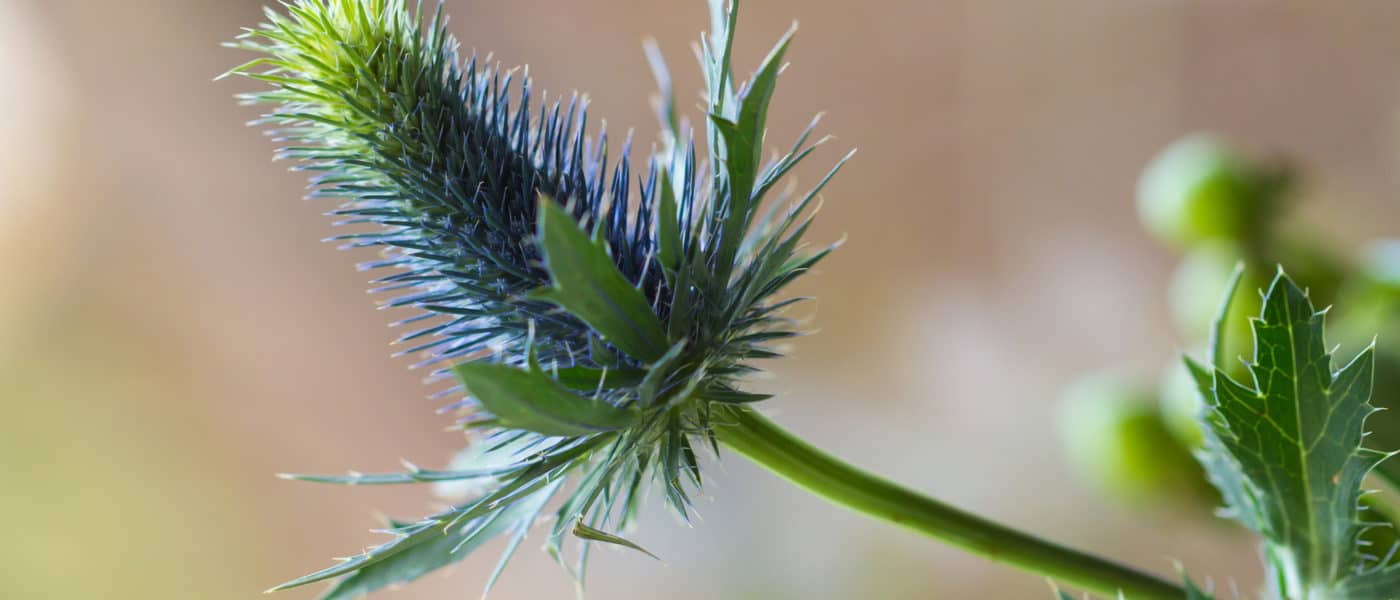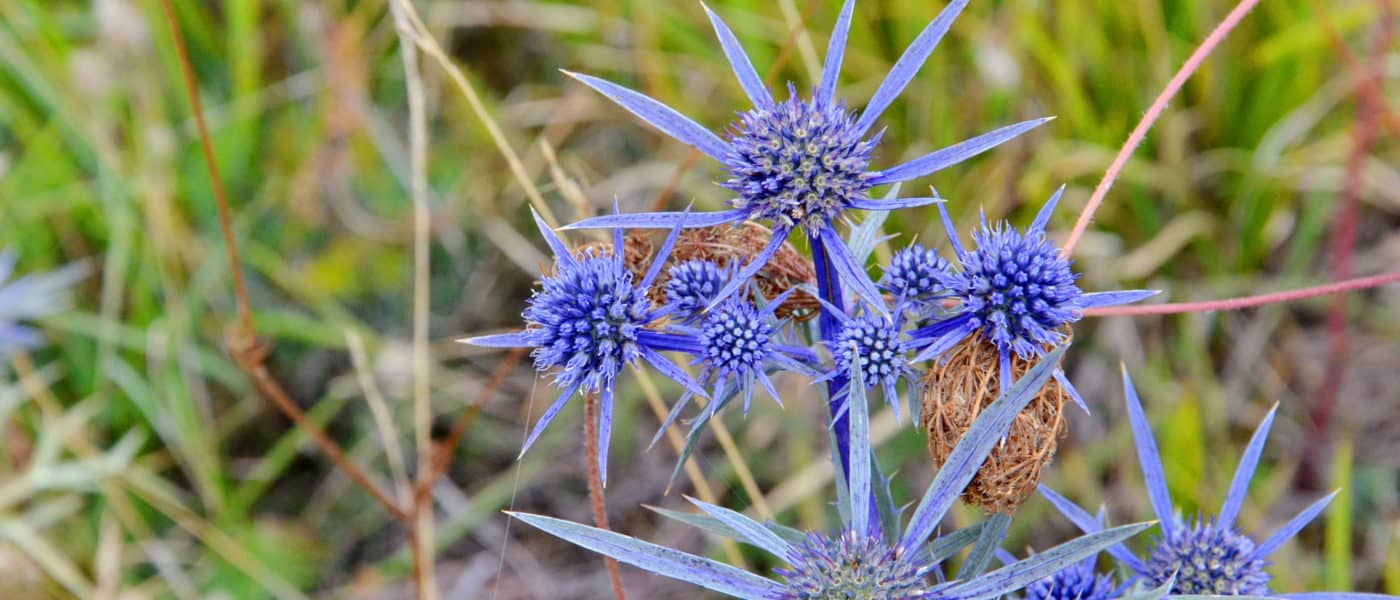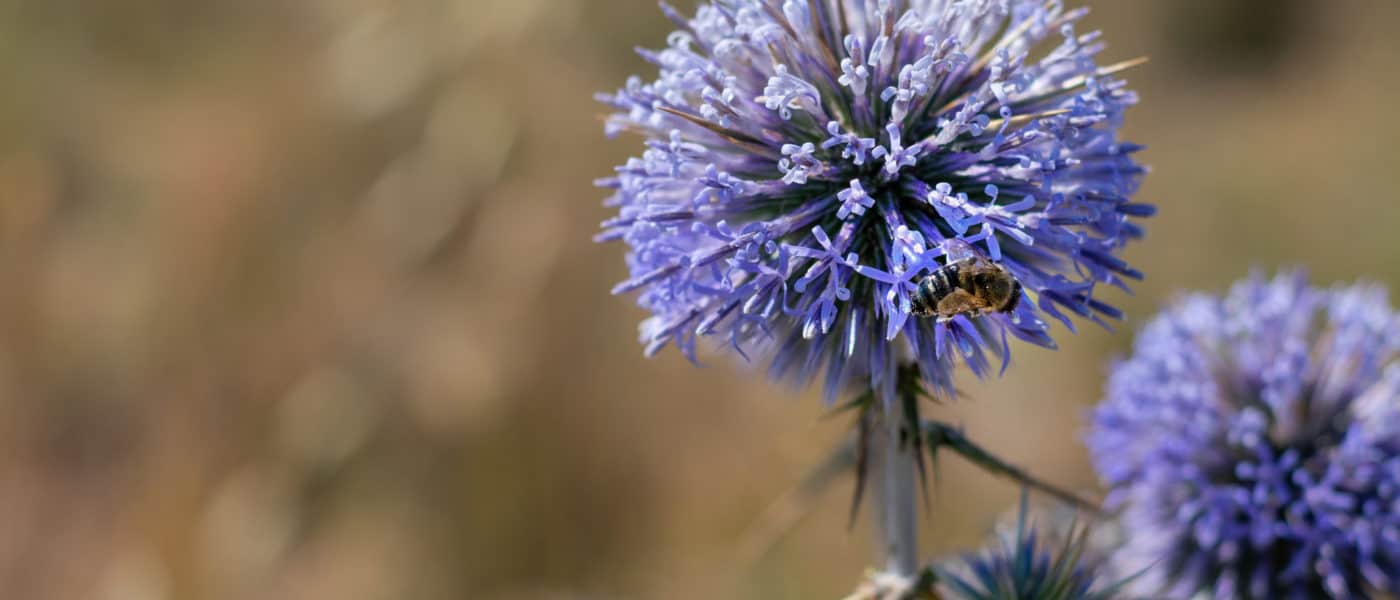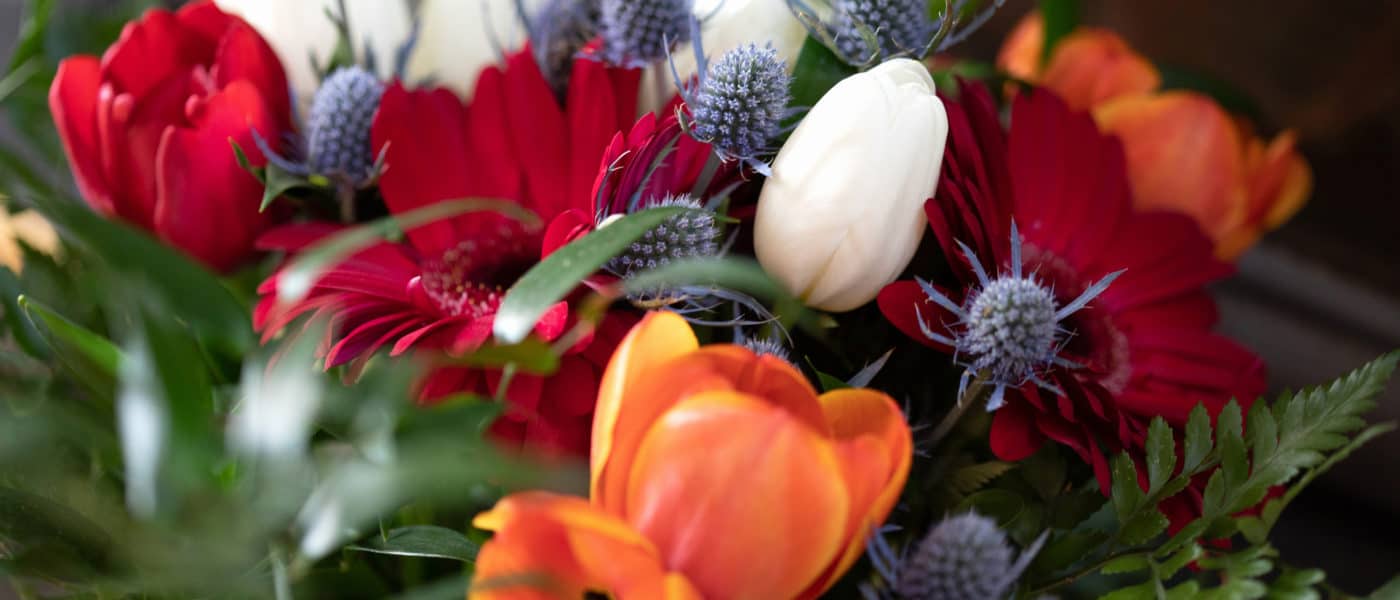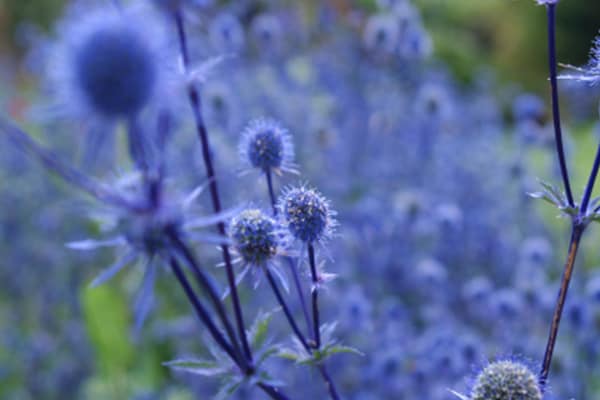
Veldkamp’s Garden Center
Blue Thistle
Blue Thistle grows wild in many states in the United States. The plant is actually considered to be a herbaceous perennial weed. In reality, this herbaceous weed produces gorgeous blue floral blooms. These beautiful blooms contain nectar that is highly favored by bee’s and butterfly’s of many different varieties. If you are a photographer and want to get some great butterfly photos, you need to find yourself a great big patch of blue thistle. The bigger the blue thistle patch, they more butterfly’s you are going to find. We guarantee you will get some great photos and video if you are patient.
The blue thistle is not a native plant to the United States. It actually has it’s roots, no pun intended, in eastern Europe. It is thought that many years ago, these unique weedy plants were somehow transported and subsequently introduced to the United States. Today, blue thistle grows wild in many states. It is not unusual to find it here in Georgia. In our state, you are most likely to find it growing in sandy fields that are exposed to full sun. These weedy plants thrive in full sun. They grow often grow right next to other drought tolerant grasses, weeds and plants. The blue thistle is an extremely drought tolerant plant. They require very little water, as you might expect from a plant considered to be a weed. These blue thistle plants will rapidly multiple when moisture conditions increase. The more rain, the more blooms you are likely to see.
The official name for the blue thistle plant is “Eryngium Planum”. The genus name “Eryngium” is Greek. It refers to a plant or type of thistle weed. The genus name “Planum” translates as flat. Additional common names for blue thistle include blue devil, blueweed, sea holly and viper’s bugloss. Even though blue thistle is considered to be a flowering weed, it is actually a member of the parsley family. Other related plant species include Queen Anne’s lace, anise and fennel. While many of these species have strong, pungent odors and are grown for food, flavoring or medicinal purposes, blue thistle is not fragrant and is not so used.
Veldkamp’s Flowers uses blue thistle in a number of different floral designs that we create. It is normally used as an accent flower. Blue thistle is such a unique bloom. We find that customers seem to really love the floral designs that include blue thistle blooms. Our floral design team is known for the luxurious, upscale floral designs that we create. If you love blue thistle, we invite you to stop by our floral design center. We will custom design a beautiful floral arrangement for you, that includes these unique and gorgeous blooms.
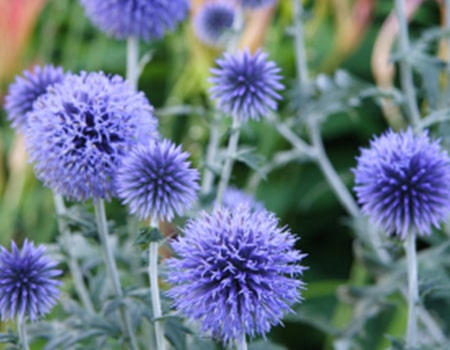
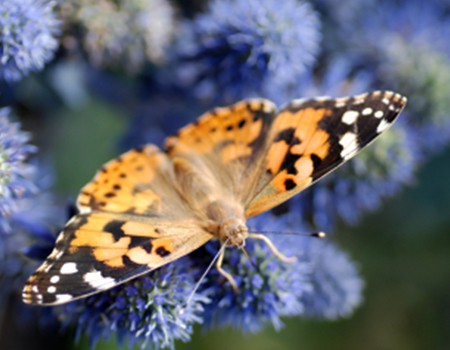
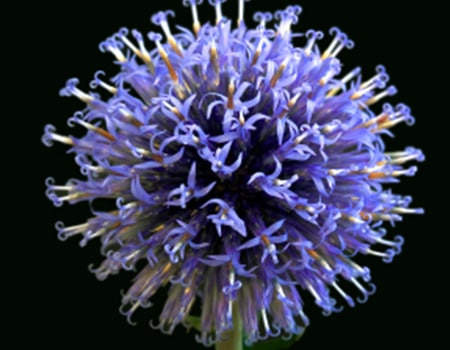
Growing and Care Recommendations
Blue Thistle is a hardy plant. It grows best in full sun. The plant produces a beautiful unique, thorny blue flower. The leaves of the plant are blue-gray and are not parallel veined. Its distinctive snowflake-shaped bloom contains small steel blue, white or rose colored flowers with a cone center. Cold storage at 34-38 degrees intensifies the color of the bloom. The flowers bloom from July through August. To promote maximum blooming, deadhead spent blooms. Good garden companions include white phlox, snapdragons and wormwoods. These flowers may be easily divided and sown from seeds. Because they self-sow, they spread with amazing speed.
The plant is vulnerable to powdery mildew and root rot, so keep the soil moist, but not soggy, and apply a fungicide if necessary. Snails and slugs are attracted to the plant. Blue thistle is a beautiful cut flower (it makes a great filler in bouquets), that is available most of the year. The vase life for fresh flowers is 10-12 days. The flowers should be harvested after they have fully opened. When arranging, remove bottom leaves if present. Recut the stems, under water, at an angle and place in the vase with water treated with florist plant food for maximum vase life. Replace the water every 3-4 days. The flowers may also be easily dried.
Beyond its striking visual appeal, Eryngium or Blue Thistle, is renowned for its resilience and low-maintenance qualities, making it a favorite among gardeners who have full-sun landscapes. To ensure the health and vibrancy of the plant, gardeners should consider well-drained soil to prevent the dangers of overwatering and root rot. Regular monitoring for pests like snails and slugs is crucial, as these critters can quickly infest and damage the foliage. Implementing simple preventive measures, such as setting up barriers or using organic repellents, helps protect the unique beauty of this thistle variant.
Moreover, Eryngium is also known for its versatility in landscaping. It can be used as an accent plant in flower beds or borders, adding a touch of texture and interest to the landscape design. Its spiky foliage and unique blue color make it an eye-catching addition to any garden. In addition, Eryngium is a popular choice for cut flower arrangements. Its long-lasting blooms and striking appearance make it a favorite among florists and home gardeners alike. When choosing Eryngium for cut flowers, select stems that are just starting to open, as these will last longer in bouquets.
Beyond its practical uses, Eryngium also has a rich history and cultural significance. In ancient times, it was believed to have protective powers and was used in rituals and medicinal treatments. It has also been associated with love, loyalty, and courage, making it a popular gift for loved ones. Aside from its traditional symbolism, Eryngium has also gained popularity in modern culture as a symbol of strength and resilience. Its ability to thrive in harsh conditions and its striking appearance have made it a favorite among tattoo enthusiasts, often seen as a representation of overcoming challenges and obstacles.
Overall, Eryngium is more than just a beautiful plant for the garden. It has a rich history and cultural significance, making it a meaningful addition to any landscape. Its low-maintenance qualities and versatility in landscaping also make it a practical choice for gardeners. So next time you see the striking blue thistle, remember its many uses and meanings beyond its aesthetic appeal. So let’s keep this unique and resilient plant thriving in gardens around the world!


